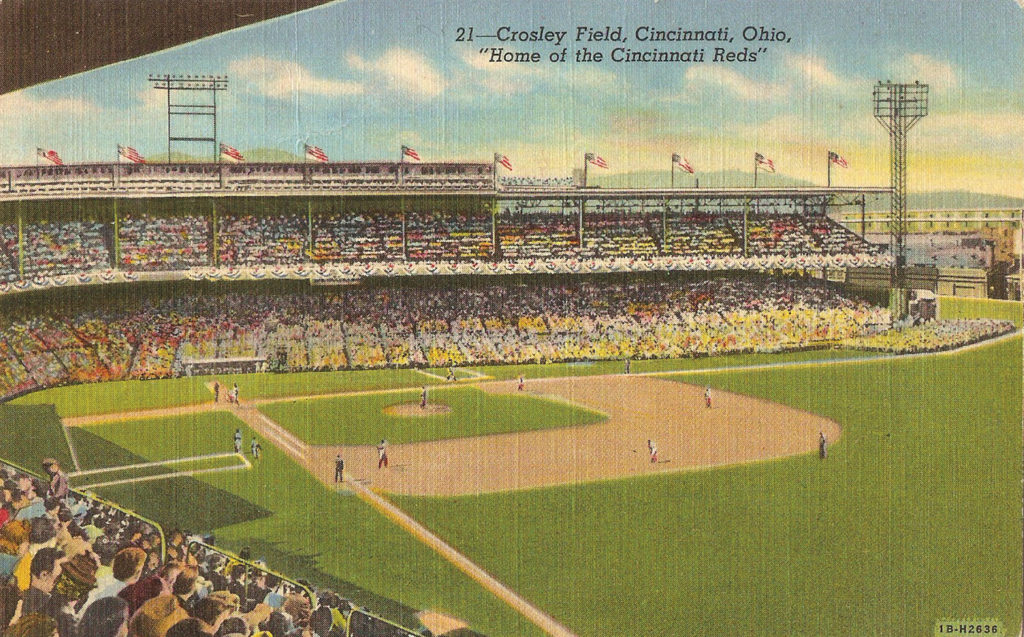
Michael Bushnell
Publisher
This week we stop by Crosley Field in Cincinnati, Ohio, long-time home of the Cincinnati Reds, the original, football Cincinnati Bengals, and the Negro American League Cincinnati Tigers!
The stadium was built on the site of the old League Park that housed the Reds from 1894 through the 1911 season.
In 1912, the stadium was almost entirely rebuilt. Originally named Redland Field, the name was a cross between the baseball team name and color.
It was built at a cost of $225,000 and seated a little over 20,000 fans.
In 1934, the struggling Reds were purchased by Powel Crosley, owner of the Crosley Car Company.
Interestingly, the stadium ownership allowed cross-marketing of his automobiles at Reds games.

It was during this period that the stadium underwent a number of structural changes including seating capacity increase and the addition of lights in 1935.
Crosley Field has the designation of being the first Major League ball-yard to install lights for night games.
In 1934, African-American businessman DeHart Hubbart founded the Cincinnati Tigers.
Hubbard was a Gold Medalist in the long jump during the 1924 Summer Olympics.
Hubbard’s Cincinnati Tigers entered the Negro American League and played their inaugural 1936 season in hand-me-down Reds uniforms.
The Tigers folded after the 1937 season.
Crosley Field remained the home of the Reds through the 1970 season.
The stadium was demolished and the Reds moved to Riverfront Stadium where they played through the 2002 season.
In 2003, The Great American Ballpark opened and is the current home of the team.
Elements of the old Crosley field remain, including the old “Crosley Terrace,” an area that is built on a 15-degree incline, and statues of Crosley-era players such as Joe Nuxhall, Ernie Lombardi and Frank Robinson.
For more information on the Crosley Field or any of the old ball-yards featured in our Black History Month series that spotlights various Negro League venues during the 100th anniversary of the league, visit the Negro Leagues Baseball Museum in the 18th and Vine Historic District or visit the museum’s website at www.nlbm.com.



















